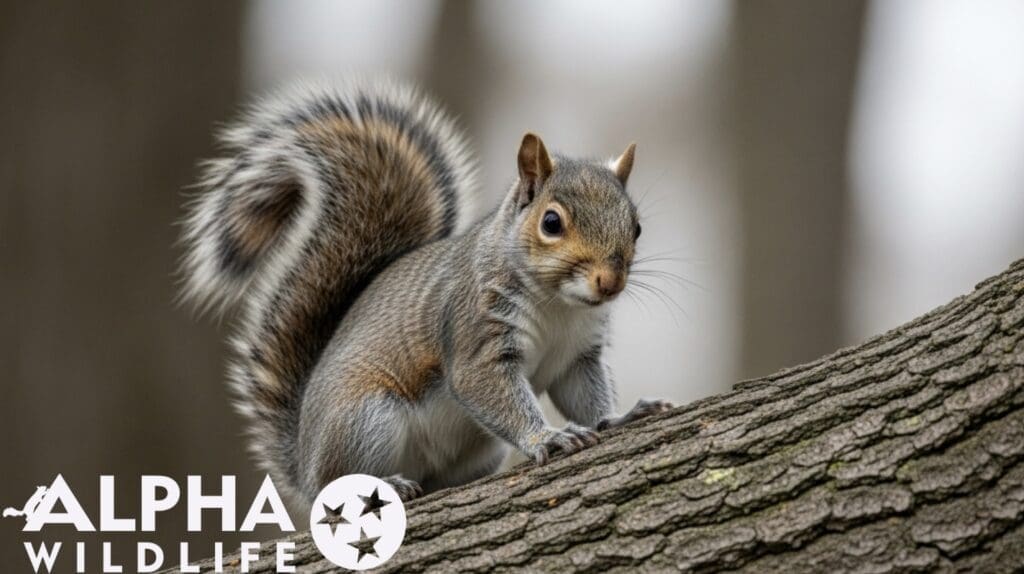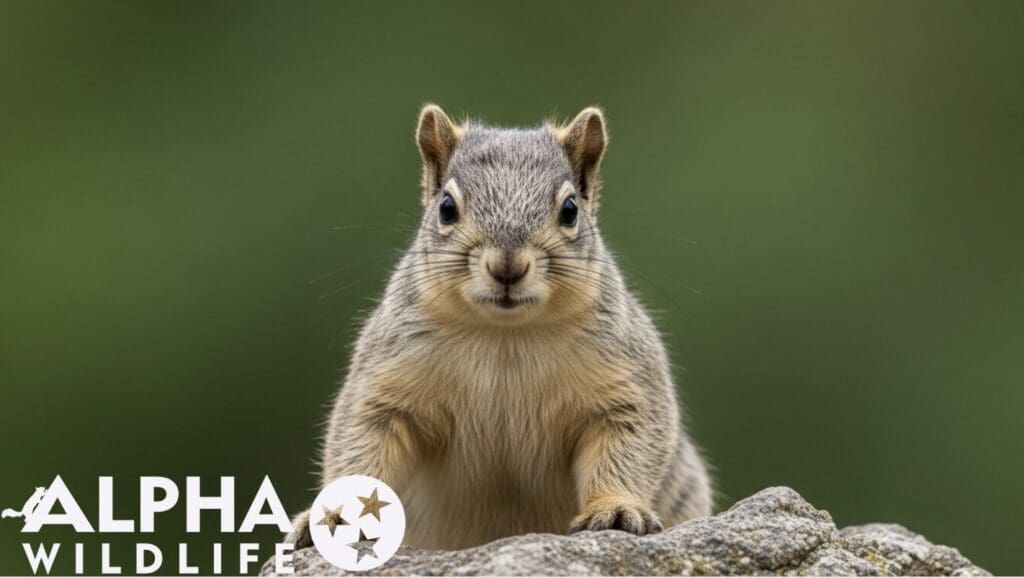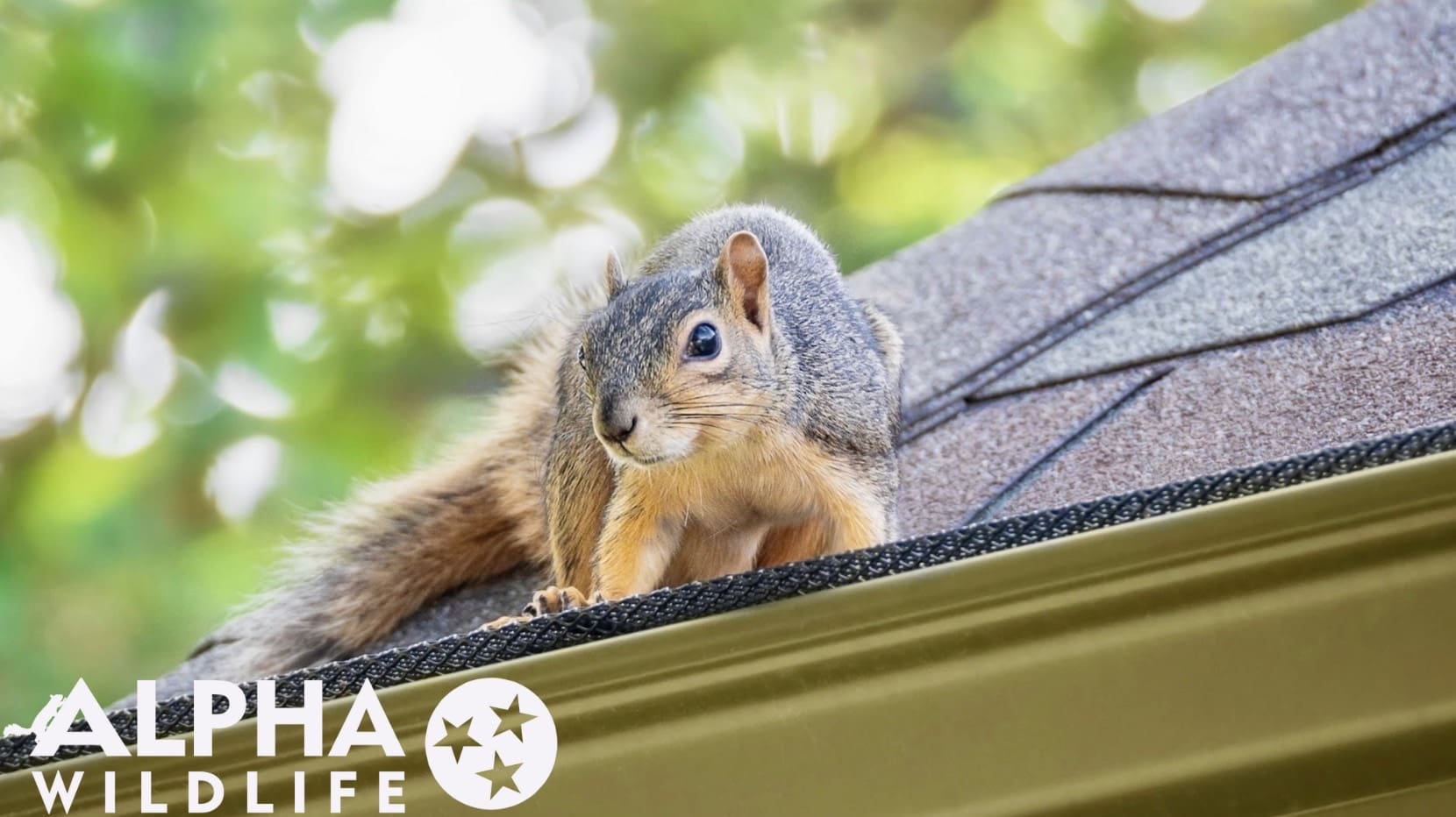Squirrels — Tennessee’s friendly neighborhood attic destroyers. These little critters are smart enough to sneak into your home undetected, but they’re also goofy enough to forget where they hide most of their stored acorns.
These adorable pests can be some of nature’s cutest creatures, but they can also be a major nuisance to homeowners — especially those in Tennessee. While all squirrels might look similar, there are actually several different species that roam the Volunteer State.
Since each of these species have their own quirks, diet, and favorite spots to cause chaos. We’re going to breakdown the top four squirrels that cause trouble in the Tennessee area.

Number #1 — Eastern Gray Squirrel
Appearance: These bushy tailed squirrels can grow from 17 to 21 inches in length and weigh up to 1 ½ pounds.
Where They Live: You name it, and they are probably there. This squirrel is the most common in the state of Tennessee, and they love sneaking into homes. You can find these guys in parks, backyards, and in residential neighborhoods.
Diet: As opportunistic feeders, these squirrels are not too picky about their meals. However, they are known to eat nuts, flowers, fruits, and field corn. I guess you are what you eat because these pests are nuts!
Interesting Fact: Since their teeth are always growing, Eastern Gray Squirrels constantly chew on wood, wires, and siding — not for survival, but because they need to keep their teeth filed down. Plus, they don’t have dental insurance so chewing on wires is the next best thing.
Impact to Homeowners: As the most common attic invader in the area, these pests will enjoy damaging the electrical wires and insulation in your attic.
Summary: Even though the Eastern Gray Squirrel looks cute and harmless, don’t invite them over unless you are planning a major remodel in your attic. These little fellas would love to tear up your home!

Number #2 — Eastern Fox Squirrel
Appearance: These squirrels can vary in colors, but they do have a distinctly long & bushy tail. Not only do they have a bigger tail than the Eastern Gray Squirrel, but they are longer as well. These critters can grow up to 29 inches in length and weigh up to 3 pounds.
Where They Live: Unlike the Eastern Gray Squirrel, Fox Squirrels enjoy more wooded areas, but they can reside in neighborhoods near forests.
Diet: They eat nuts, seeds, insects, and field corn.
Fun Fact: Fox Squirrels are pretty relaxed and actually spend more time on the ground than other squirrels.
Impact to Homeowners: Even though they don’t invade homes on the same level as other squirrels, these furry fellas can still sneak into your attic and chew through electrical wires.
Summary: As the big daddy of the group, these bushy-tailed critters might enjoy wooded areas, but they’ll still mess up your home.

Number #3 — Southern Flying Squirrel
Appearance: Since these are nocturnal creatures, you might not ever see one during the day. However, if you are lucky enough to spot one, they have a brown coat, a flat tail, and large black eyes. Flying squirrels also have a loose fold of skin on each side which allows them to glide (fly) around.
Where They Live: They enjoy wooded areas near water as well as an attic from time to time.
Diet: Nuts, berries, insects, and even bird eggs. No wonder these are Tennessee’s smallest tree squirrel.
Fun Fact: Flying squirrels don’t actually fly — they glide. A thin membrane between their legs allows them to glide from tree to tree like tiny superheroes.
Impact to Homeowners: Once inside your attic, flying squirrels can cause damage and leave behind droppings as well as nesting materials. These pests also travel in packs, so there’s most likely a few in your home if you see one.
Summary: The squirrel version of Batman — they live in the shadows, only come out at night, and glide around like they own the place.

Number #4 — Red Squirrel
Appearance: This small squirrel has reddish-gray hair, can grow up to 15 inches in length, and weigh between 6-12 ounces.
Where They Live: Mainly in East Tennessee’s higher elevations and forested regions.
Diet: Pine cones (yes, pine cones), acorns, seeds, and even bird eggs. They are pretty much the scavengers of the forest.
Fun Fact: Red squirrels are so loud that they can be heard at a great distance.
Impact to Homeowners: Even though it’s uncommon for Red Squirrels to sneak into homes, if they did, they could cause damage just like the other squirrels.
Summary: Red Squirrels are small critters that just want to eat pine cones, and enjoy the quiet forest. They might be my spirit animal.
The Squirrel Situation in Tennessee
Squirrels are adorable — until they treat your house like a high school after party. Their climbing, chewing, and nesting habits cause thousands of dollars in damage to Tennessee homes each year. Infestations can lead to:
- Damaged electrical wires (fire hazard)
- Contaminated insulation
- Torn soffits and roof vents
- Strange noises & disturbances
If you suspect you’ve got a few sneaky pests hiding in your home, it’s time to evict them (humanely, of course).

Call The Professionals
At Alpha Wildlife, we handle squirrel problems across Memphis, Nashville, Knoxville, Chattanooga, Louisville, Columbia, and Charleston. Our certified experts provide solutions to humanely get rid of the wild animal and provide preventative measures to keep them out for good.
So, if you have a flying squirrel gliding into your attic or an eastern gray squirrel chowing down on your insulation, we’ll get them out and get your life back to normal.
Quick Recap
- Eastern Gray Squirrel: The most common attic invader
- Eastern Fox Squirrel: The Big Daddy
- Southern Flying Squirrel: The squirrel version of Batman
- Red Squirrel: The pine cone eating champion
Tennesseans love watching squirrels struggle to gain access to a bird feeder or leap from a roof to a tree branch. But they will make awful roommates, and they will drive you nuts (pun intended) if you let them.
Keep your sanity and call Alpha Wildlife if you have any squirrel problems!
Tennessee Squirrel FAQs
Q: What are the most common types of squirrels in Tennessee?
A: Tennessee is home to four main species — the Eastern Gray Squirrel, Eastern Fox Squirrel, Southern Flying Squirrel, and Red Squirrel.
Q: Which squirrels are most likely to get into attics in Tennessee?
A: Eastern Gray Squirrels and Southern Flying Squirrels are the top culprits. They chew through vents or soffits to nest in warm, insulated spaces.
Q: What do Tennessee squirrels eat?
A: Most Tennessee squirrels eat nuts, acorns, seeds, berries, and field corn. Some species also eat flowers, insects, and bird eggs when food is scarce.
Q: Are squirrels dangerous to homes?
A: Yes. They can chew electrical wires, damage insulation, and create fire hazards. Their droppings and urine also contaminate attic spaces.
Q: How can I tell which type of squirrel is in my yard or attic?
A: Size and color help identify them — gray for Eastern Gray Squirrels, red fur for Red Squirrels, and gliding membranes for Flying Squirrels.
Q: What’s the best way to prevent squirrels from getting into my home?
A: Trim tree branches away from the roof, seal vents and soffits, and avoid leaving bird seed or pet food outside.



